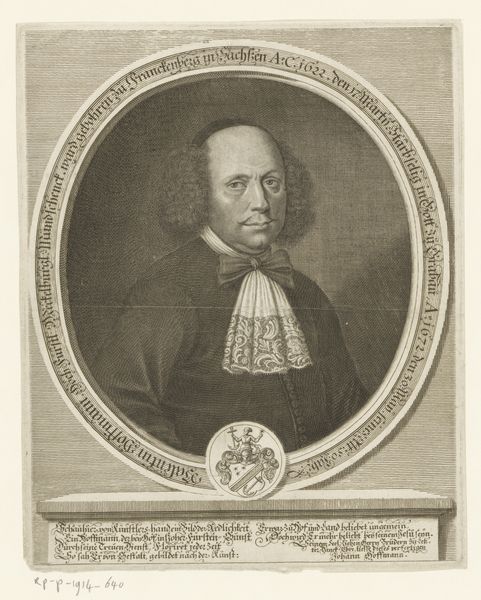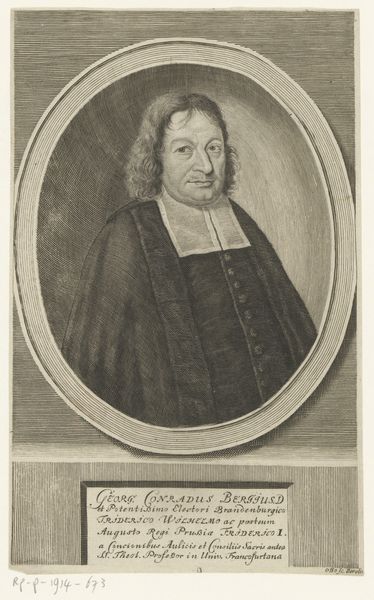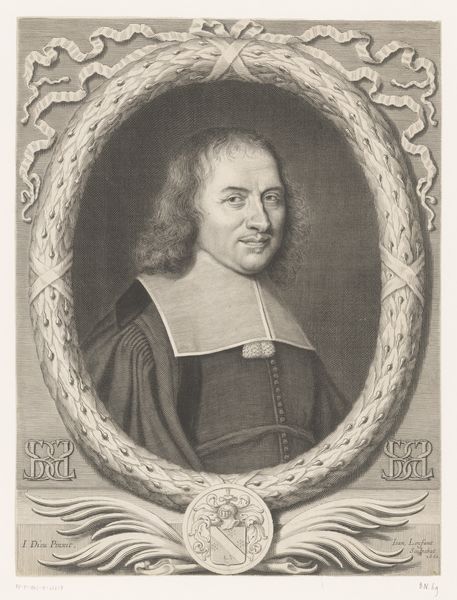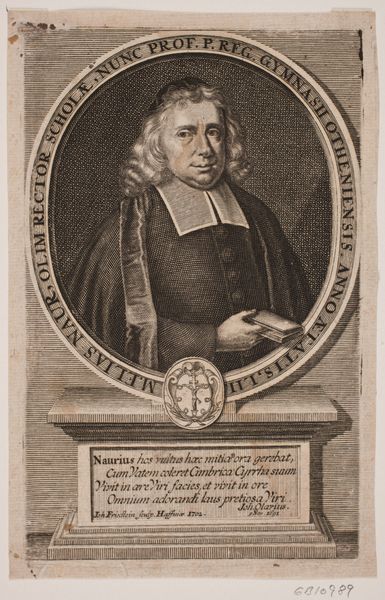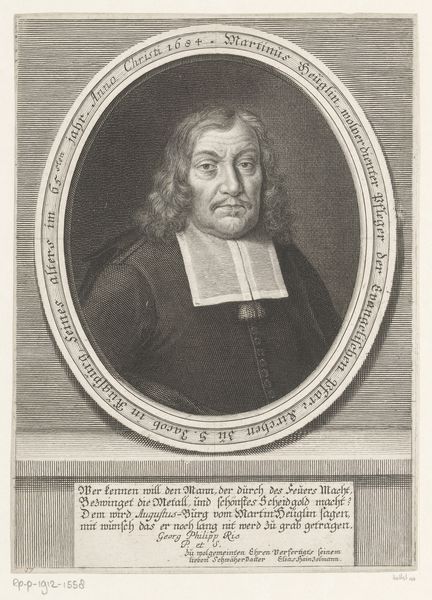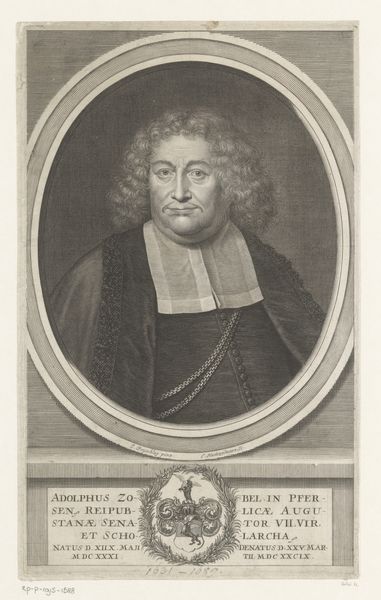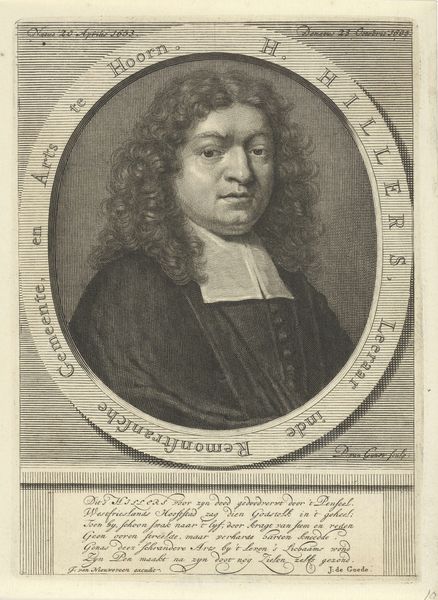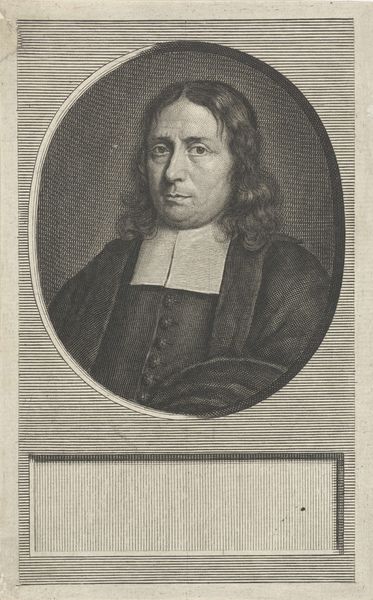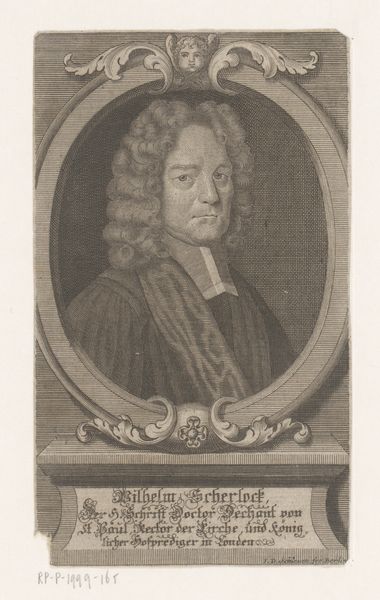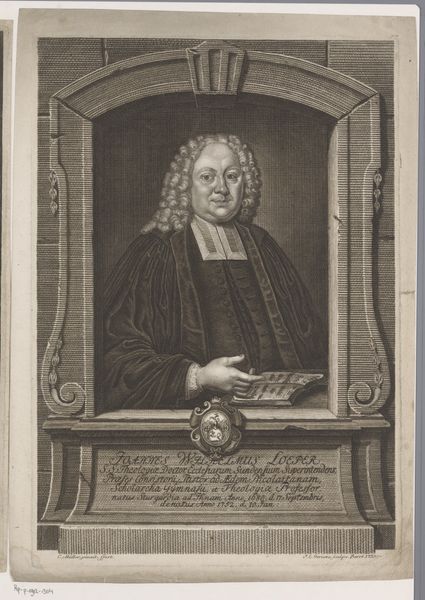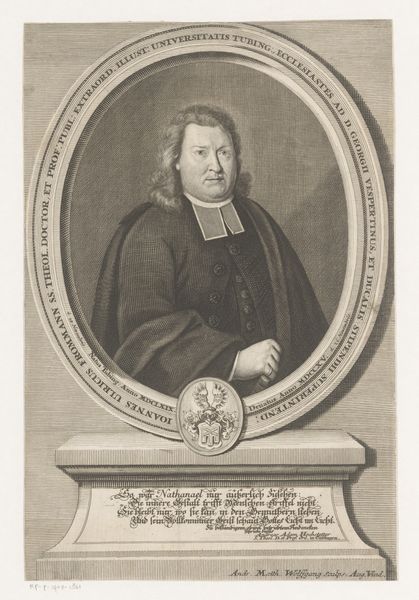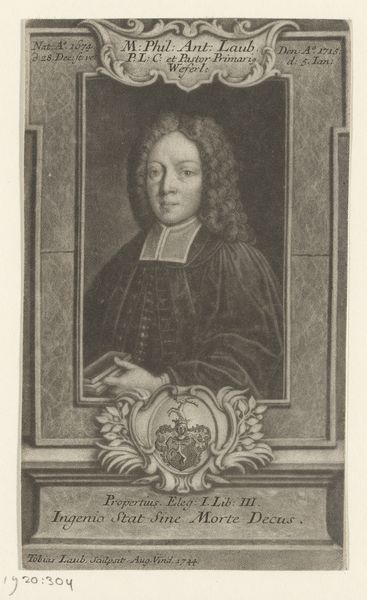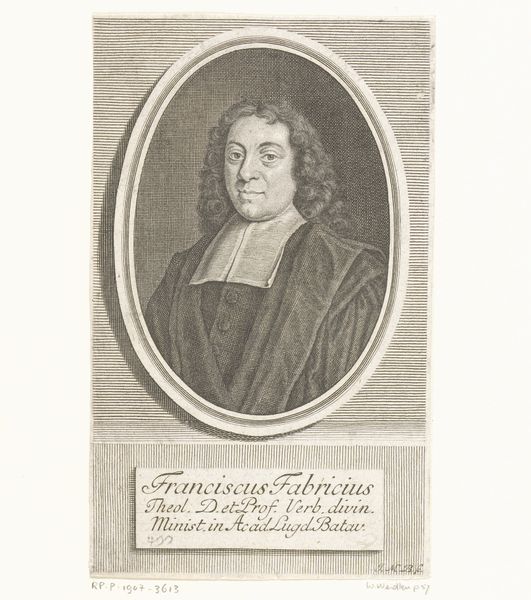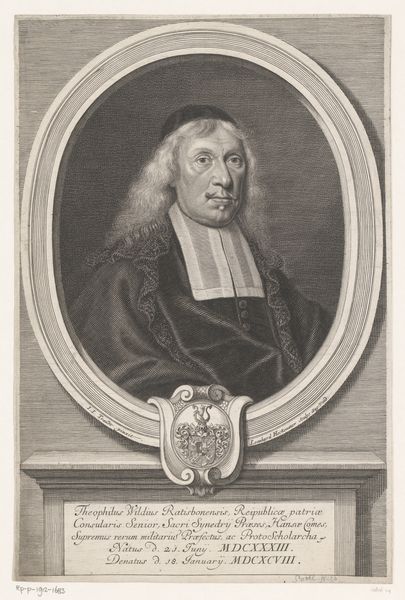
Portret van Andreas Wilhelm Agricola op 59-jarige leeftijd 1684 - 1693
0:00
0:00
print, engraving
#
portrait
#
baroque
# print
#
figuration
#
historical photography
#
19th century
#
line
#
history-painting
#
engraving
Dimensions: height 301 mm, width 20 mm
Copyright: Rijks Museum: Open Domain
Curator: Welcome. Before us, we have a print from somewhere between 1684 and 1693, now residing here at the Rijksmuseum, titled "Portret van Andreas Wilhelm Agricola op 59-jarige leeftijd", by Elias Hainzelmann. It's an engraving. Editor: The somber mood struck me first. A weightiness conveyed through the detailed lines and formal composition. What do you notice in the subject’s gaze? Curator: Well, structurally speaking, the oval frame presents a fascinating tension with the implied rectangular format of the print itself, and the contrast heightens the formality. The engraved lines are also key—notice how they model form and texture, especially in the rendering of Agricola's face and the cascade of ribbon above. The stark use of black and white creates a sense of austerity, a familiar aesthetic in Baroque portraiture. Editor: Yes, austerity! Let’s not forget the craft of engraving itself. The deliberate, time-intensive labor involved. Each line etched by hand using a burin tool requires a tremendous skill, precision, and physical effort to produce these portraits in multiples. Curator: Absolutely, the reproducibility is key. But I'd argue the linear quality, and its resultant contrasts are far more central. The visual interplay is where meaning really emerges, and its relation to prior works in portraiture… Editor: I agree, but it still goes back to how prints democratized portraiture. These are, in a sense, images designed to disseminate and celebrate people like Andreas Agricola beyond the immediate confines of his circles. This challenges notions around the privileged classes’ access to artwork, opening up ways that we need to address material conditions that led to his image. Curator: That's interesting, and the Baroque really did embrace ornate decoration, as you noted before, we do see it at play with this work... I find the details really revealing. Thank you! Editor: Agreed! It brings another dimension to the man behind the engraving, especially when focusing on artistic labor involved. Thanks!
Comments
No comments
Be the first to comment and join the conversation on the ultimate creative platform.
